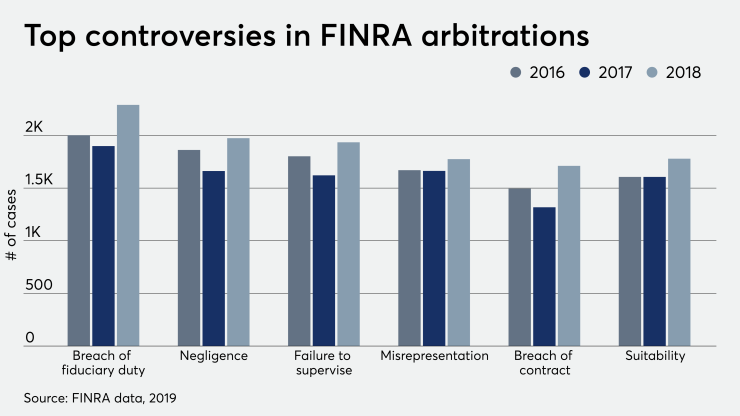Q: I had a customer complaint over 15 years ago that still shows up on my CRD report. I thought these dropped off after 10 years. I’ve spoken to a lawyer but I can’t seem to get a straight answer. Can you explain how this works?
A: I continue to receive questions about this topic. The truth is that under current FINRA policy, it will be very difficult, if not impossible, to remove a client complaint on your Central Registration Depository report, or CRD.
Here’s why: Before 2010, FINRA policy stated that complaints that were more than two years old, and that had not been settled or had a decision rendered in a court or arbitration proceeding, were not reportable. Likewise, customer complaints, arbitrations or litigations that had settled for less than $10,000, or $15,000 if they were settled after May 2009, were also not reportable. In essence, that meant complaints would drop off an advisor’s CRD after two years if there was no settlement or if the cases were settled for less than those specified amounts.
Furthermore, the customer complaint would only be reported beyond the two-year period if all of the following applied: (1) the complaint would have otherwise dropped off after March 2007, (2) the individual had one or more complaints within the last 10 years, and (3) the person had three or more other types of disclosable disciplinary actions, such as a regulatory sanction.
But in July 2010, the regulator decided that all complaints would continue to be disclosed for as long as the individual was registered as either an investment advisor or as a registered representative — even if the matter had previously been non-disclosable!
Frustratingly, this holds true even if it’s currently possible for you to answer all of the disciplinary questions on your U4 with a “no.” The information from the Disclosure Reporting Page (DRP) is still disclosed on the CRD report and, in most cases, must be updated with the current status of the complaint.
Once that information is updated, it will be reflected on the CRD, and the only way to get it removed is to obtain an Order of Expungement from a court — generally a complicated and expensive endeavor. You should speak with an experienced attorney if you choose to go that route.






